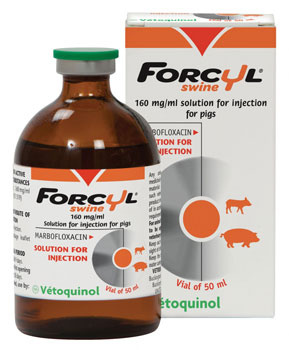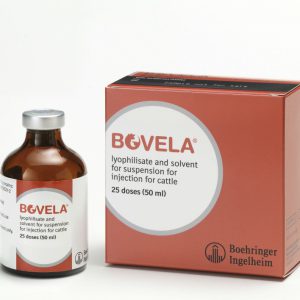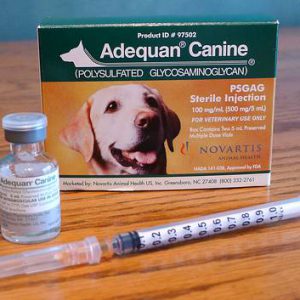Forcyl swine 160 mg/ml Solution for Injection for pigs Species: Pigs
Therapeutic indication: Pharmaceuticals: Antimicrobials: Injections
Active ingredient: Marbofloxacin
Product: Forcyl swine 160 mg/ml Solution for Injection for pigs
Product index: Forcyl Swine
Pig – meat: Meat and offal: 9 days
Presentation
Solution for injection. Clear yellow greenish to yellow brownish solution. One ml contains 160 mg marbofloxacin and 15 mg benzyl alcohol.
Uses
In fattening pigs: Treatment of respiratory tract infections caused by susceptible strains of Actinobacillus pleuropneumoniae and Pasteurella multocida. In weaned piglets: Treatment of intestinal infections caused by susceptible strains of E. coli. In post-partum sows: Treatment of metritis mastitis agalactia syndrome (form of postpartum dysgalactiae syndrome, PPDS) caused by susceptible strains of E. coli.
Dosage and administration
The recommended dosage is 8 mg/kg body weight i.e. 1 ml/20 kg body weight in a single intramuscular injection in the side of the pig neck. To ensure a correct dosage, bodyweight should be determined as accurately as possible to avoid underdosing.
Contra-indications, warnings, etc
Do not use in animals with known hypersensitivity to fluoroquinolones or to any of the excipients. To limit development of resistance, do not use fluoroquinolones as prophylaxis or metaphylaxis to prevent diarrhoea at weaning.
Special warnings
Do not use in cases where the pathogen involved is resistant to other fluoroquinolones (cross resistance).
Special precautions for use in animals
Official and local antimicrobial policies should be taken into account when this product is used. Fluoroquinolones should be reserved for the treatment of clinical conditions which have responded poorly, or are expected to respond poorly, to other classes of antimicrobials. Wherever possible, use of the product should only be based on susceptibility testing. Use of the product deviating from the instructions given in the SPC may increase the prevalence of bacteria resistant to the fluoroquinolones and may decrease the effectiveness of treatment with other quinolones due to the potential for cross resistance.
Special precautions to be taken by the person administering the veterinary medicinal product to animals
People with known hypersensitivity to (fluoro)quinolones and benzyl alcohol should avoid any contact with the product. Wash hands after use. Avoid contact of the skin and eyes with the product. If the product comes into contact with the skin or eyes, rinse with copious amounts of water. Care should be taken to avoid accidental self-injection. In the event of accidental self-administration, the user should immediately seek professional medical care. Accidental self-injection can induce a slight irritation.
Adverse reactions (frequency and seriousness)
Local reactions can be observed at the injection site, which disappear within 36 days.
Pain at the injection site has been commonly reported (more than 1 but less than 10 animals in 100 animals).
Use during pregnancy, lactation or lay
Laboratory studies in rats and rabbits have not produced any evidence of a teratogenic, embryotoxic or maternotoxic effect associated with the use of marbofloxacin. The safety of the veterinary medicinal product has not been established at 8 mg/kg in pregnant sows or in suckling piglets when used in sows. Use only according to the benefit/risk assessment carried out by the responsible veterinarian.
Interaction with other medicinal products and other forms of interaction
None known
Overdose (symptoms), emergency procedures, antidotes), if necessary
Lesions of the joint cartilage, potentially leading to difficulties in movement, were observed in some animals treated at three times the recommended dose and treatment duration.
Withdrawal period
Meat and offal: 9 days
Incompatibilities
In the absence of compatibility studies, this veterinary medicinal product must not be mixed with other veterinary medicinal products.
Pharmaceutical precautions
Shelf life of the veterinary medicinal product as packaged for sale: 3 years Shelf life after first opening the immediate packaging: 28 days.
This veterinary medicinal product does not require any special storage conditions.
Packaging quantities
Cardboard box containing one 50 ml vial.
Further information
Pharmacotherapeutic group: antibacterials for systemic use
Pharmacodynamic properties
Marbofloxacin is a synthetic, bactericidal antimicrobial, belonging to the fluoroquinolone group, which acts by inhibition of DNA gyrase. It has a broad-spectrum activity in vitro against Gram-positive bacteria and Gram-negative bacteria. Between 2009 and 2013, the activity of marbofloxacin against Pasteurella multocida (n=444) and Escherichia coli (n= 1226) isolated from swine diseases in Europe was for P. multocida: MIC range: 0.004-1 μg/ml, MIC50: 0.013µg/ml MIC90: 0.028μg/ml, for E. coli (digestive infections): MIC range 0.008-64µg/ml; MIC50:0.026µg/ml; MIC90:0.681µg/ml, for E. coli (MMA syndrome): MIC range 0.015-16µg/ml; MIC50:0.024µg/ml; MIC90:0.475µg/ml. Marbofloxacin MIC distribution among E. coli strains isolated from digestive or MMA syndrome are similar with a trimodal distribution.
The clinical breakpoints defined for marbofloxacin are S ≤ 1 µg/mL, I = 2 µg/mL and R ≥ 4 µg/mL for Pasteurellaceae according to the “Comité de l’Antibiogramme de la Société Française de Microbiologie” (=French Society of Microbiology) (CA-SFM 2013).
Between 2009 and 2012, the activity of marbofloxacin against Actinobacillus pleuropneumoniae (n=157) isolated from swine diseases in Europe was: MIC range: 0.015-2µg/mL, MIC50: 0.03µg/mL, MIC90: 0.06µg/mL
The activity of marbofloxacin against the target bacterial species is bactericidal concentration-dependent. A decrease of susceptibility of Campylobacter spp. against fluoroquinolones was observed since 1999.
Resistance to fluoroquinolones occurs by chromosomal mutation with three mechanisms: decrease of the bacterial wall permeability, expression of efflux pump or mutation of enzymes responsible for molecule binding. To date, only sporadic cases have been reported for plasmid mediated fluoroquinolone resistance in animals. Depending on the underlying resistance mechanism cross-resistance to other (fluoro)quinolones and co-resistance to other antimicrobial classes can occur.
Pharmacokinetic particulars
After administration of an intramuscular dose of 8 mg/kg, the following mean pharmacokinetic parameters were observed:
Marbofloxacin is extensively distributed. Uterus tissue concentrations in sows reach Cmax of 9.346 µg/g in the uterine body observed at Tmax of 1.00 h after administration and the AUC last was 105.4 µg.h/g. Binding to plasma proteins is weak, about 4%. In pigs, the elimination is predominantly as the active form in urine and faeces.
In the studies performed, marbofloxacin was eliminated slightly faster in post-weaning piglets than in heavier animals.https://kihorsemed.com/





Reviews
There are no reviews yet.